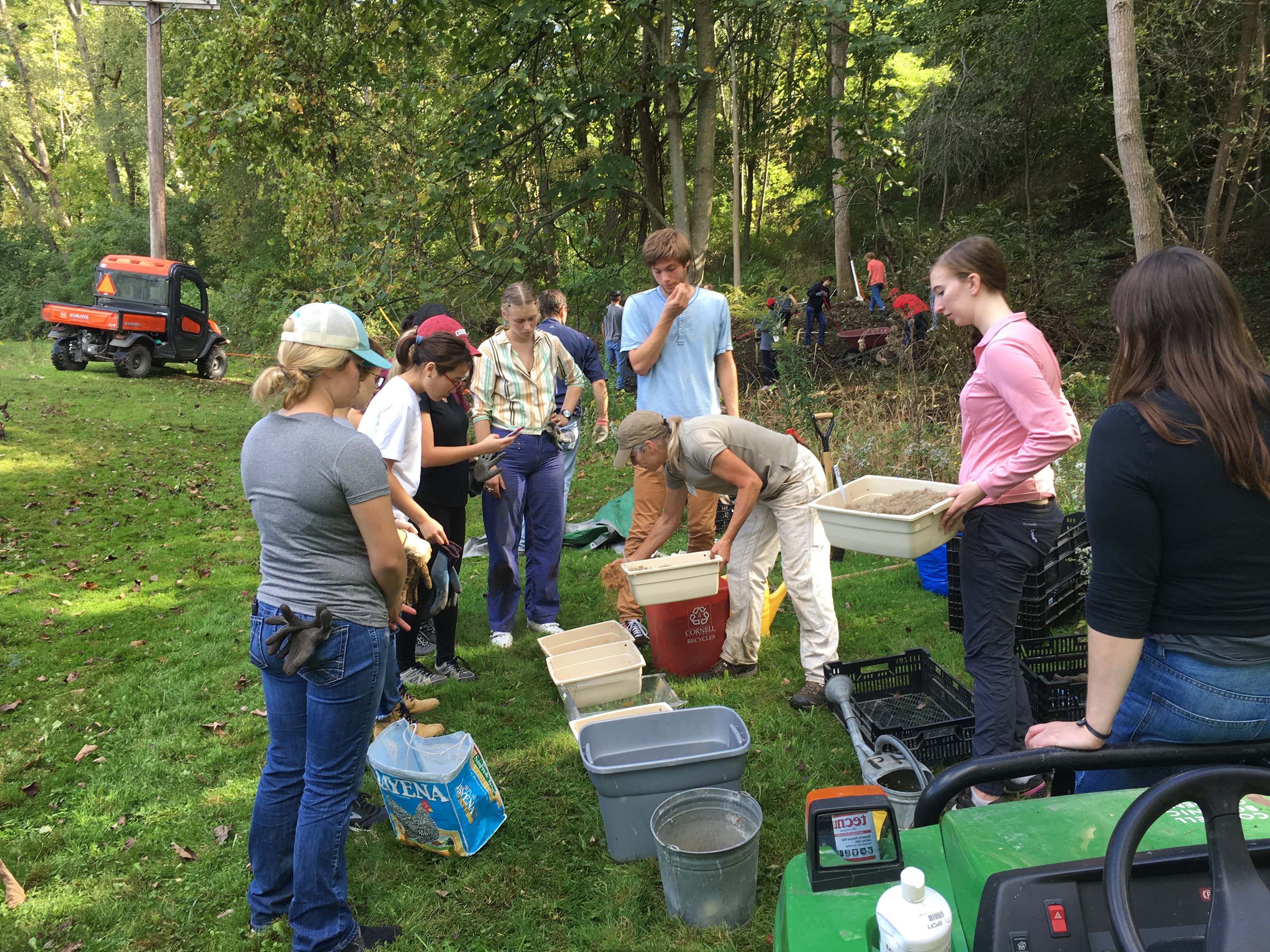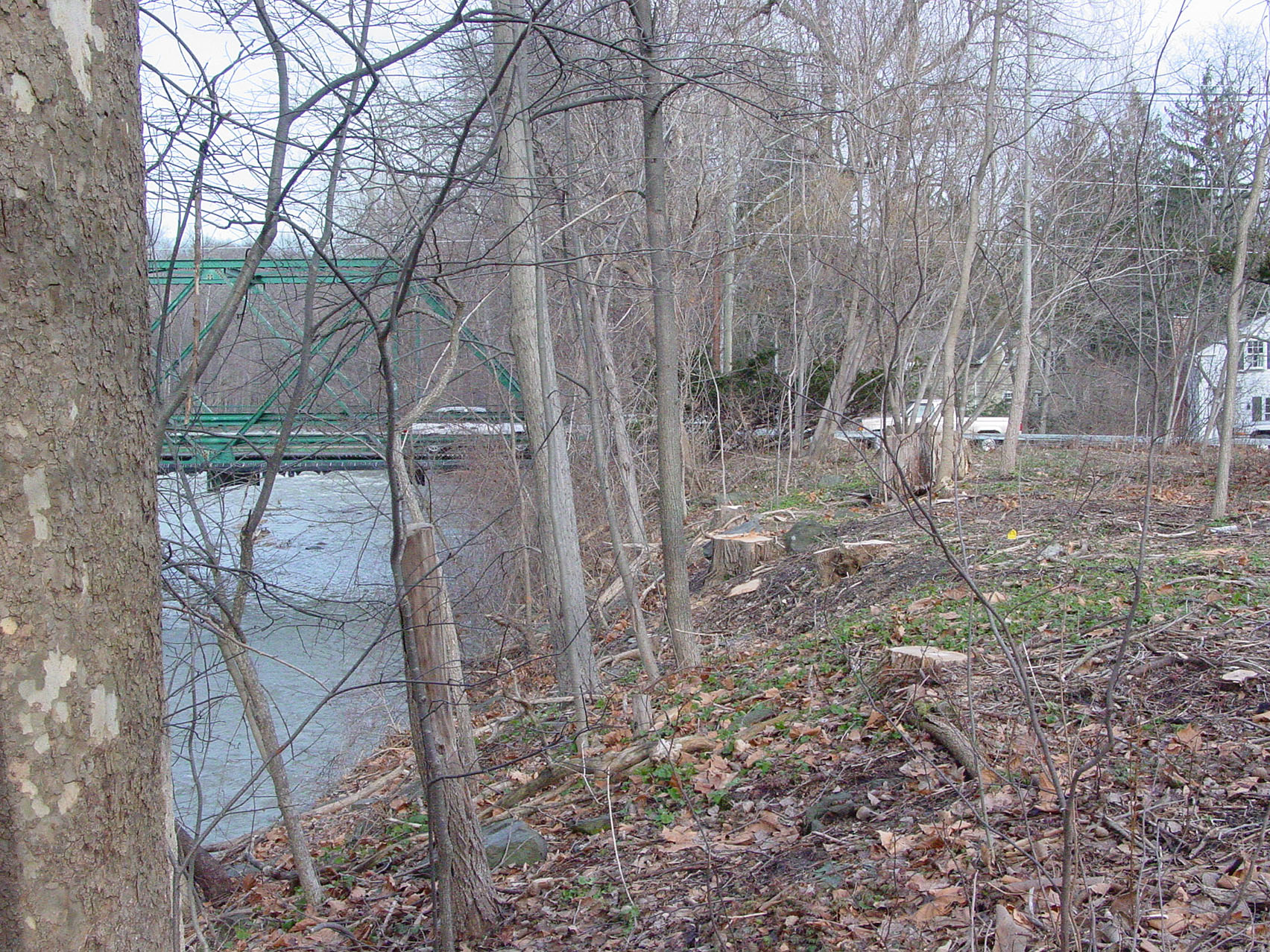![]()
Biodiversity in Natural Areas
Sustainable Landscapes Trail at Cornell University
Maintaining a rich diversity of plants is vital to stable and healthy ecosystems as they provide food, shelter and other important components of habitat for wildlife. It is estimated that the total number of vascular plant species worldwide may be on the order of 400,000. Societies around the world rely upon plants and ecosystem services for food, medicines, clean water, climate amelioration, rich and productive landscapes, energy sources, and a healthy atmosphere. Cornell Botanic Gardens provide many examples for long-term conservation of native biodiversity by controlling invasive plants and re-establishing native plants. Read more to learn about this and other efforts around here and in our other natural areas.
(Excerpted from the “Rationale for the Global Plant Conservation Strategy” webpage on the Convention for Biological Diversity )
Why is this site sustainable?
The Mundy Wildflower Garden is part of 660 acres of natural lands within and adjacent to campus that Cornell University owns and manages for the long-term conservation of native biodiversity, natural communities, and ecological processes. These holdings are protected and actively managed for conservation purposes by Cornell Botanic Gardens.
Each preserve has a management plan that includes the site’s purpose, description, regional landscape context, geology, ecological communities, property history, soils, hydrology, cultural amenities, historic management regimes, challenges to management and threats to ecology, maps, plant communities, common plant and animal species, plant and animal species of conservation concern, and invasive species threats. The purpose of these plans is to identify and implement management, monitoring, and research goals and actions.
Cornell Botanic Gardens staff work to preserve the rich biodiversity of each site by removing non-native invasive species, re-establishing native plants, and protecting plants from disease, insect pests, and damage from deer or small mammals.
Biodiversity Programs
Invasive Insect Management
Look for a round silver tag at the base of many Eastern hemlock trees. They were treated with the pesticide imidacloprid to control the hemlock woolly adelgid (HWA), an invasive insect that poses a serious threat to both Carolina hemlocks (Tsuga caroliniana) and eastern hemlocks (Tsuga Canadensis), causing nearly 100% mortality in infested trees. For more information on HWA and our control efforts, visit the Cornell Botanic Gardens Hemlock Woolly Adelgid webpage.
Plant Reintroduction
In the area in front of you, alvar (dry limestone prairie) plants were introduced as part of the streambank restoration project. These include ground juniper (Juniperus horizontalis), ebony sedge (Carex eburnea), balsam ragwort (Packera paupercula) and prairie avens (Geum triflorum), also a state-listed rarity.
On the hillside wetland along the Cayuga Trail, look for American globeflower (Trollius laxus ssp. laxus), a globally rare species that is at its greatest abundance in the Ithaca area. Over half of the world’s globeflower populations are found along the watershed of Fall Creek, which flows past this natural area. The globeflowers are growing in alkaline wet areas, or fens, in this hillside. Because conditions here match the globeflower’s preferred habitat, we successfully planted seedlings grown from seeds collected from other Botanic Gardens natural areas. Some of the globeflower seeds we collect are also “banked” at the USDA National Center for Genetic Resources Preservation (NCGRP) at Fort Collins Colorado—a state-of-the-art conservation seedbanking facility. Along the paths within the deer exclosure, look for Twinleaf (Jeffersonia diphylla), a beautiful, rare native plant species; in New York State it is listed as Threatened. To help augment this population, twinleaf seeds were collected from local populations and these plants will be added to the garden.
Habitat Restoration
A lot of effort has been devoted to restoring areas that were overrun with invasive plant species. Visit the following two areas to witness success stories of how areas heavily infested with aggressive invasive species were restored with a diverse palette of beneficial native species. This area is part of a streambank stabilization effort. Soil containing invasive plant seed was removed part of a streambank stabilization effort, soil containing invasive plant seed was removed from the site and replaced with weed-free sand and gravel typical of streamside habitats. Staff gardener Krissy Boys, with the help of many volunteers planted a new community of cool- and warm-season grasses and flowers that thrive in the hot, dry and rocky conditions there. Read more about this attractive and diverse landscape in an article on the Ecological Landscape Alliance webpage.
In the southwest corner of the garden, large sections of woods were heavily infested by invasive buckthorn, honeysuckle, multiflora rose and Japanese hedge parsley. With the help of Botanic Gardens volunteers, Cornell student groups and classes, Krissy Boys and dozens of volunteers removed invasive plants, section by section, and systematically planted layers of grasses, flowering plants, trees and shrubs.
Deer Management
You will see areas marked by colored flags around this garden, which are used to collect data to better understand how heavy deer browse affects an ecosystem’s species composition.


